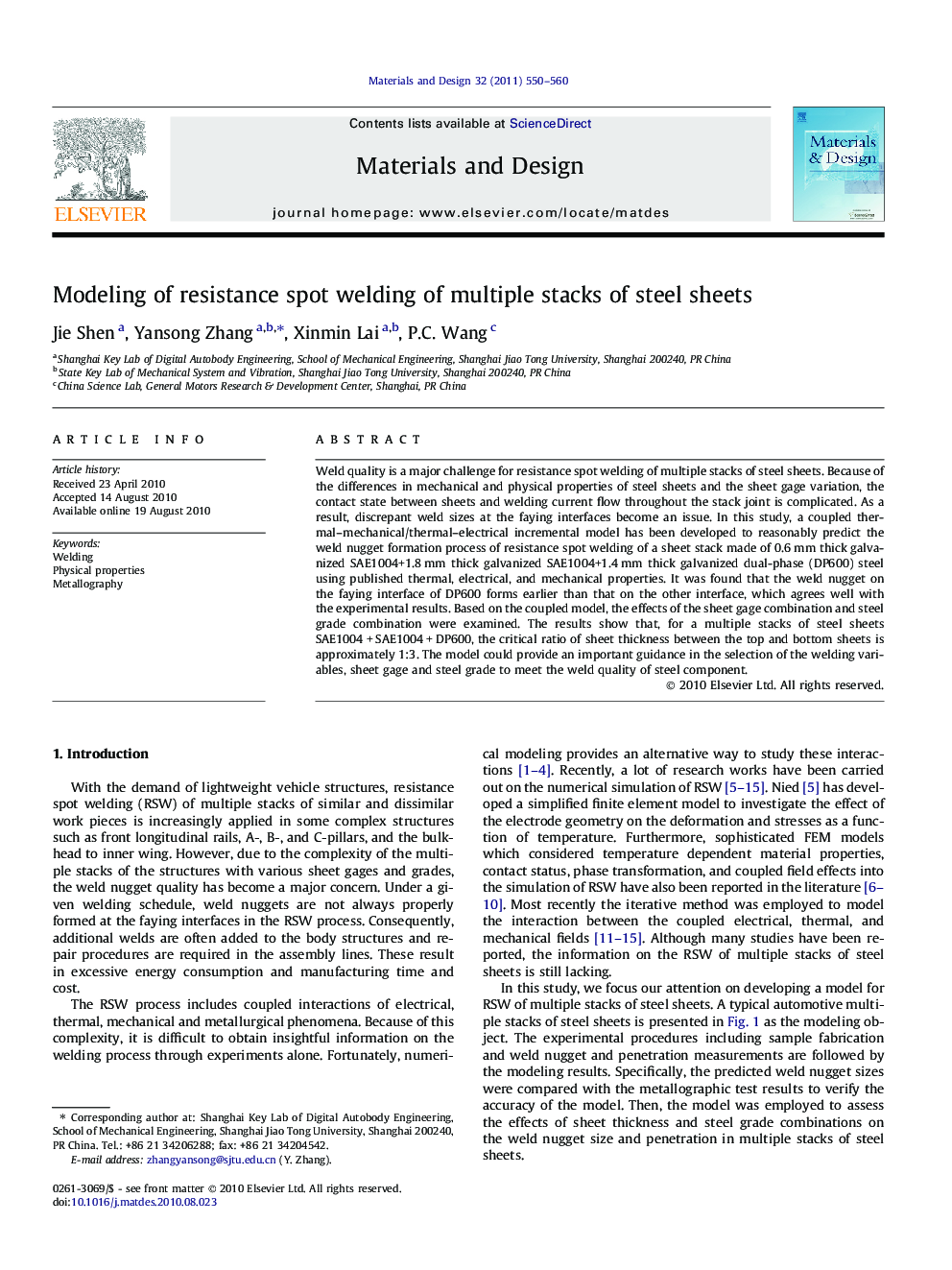| Article ID | Journal | Published Year | Pages | File Type |
|---|---|---|---|---|
| 831552 | Materials & Design (1980-2015) | 2011 | 11 Pages |
Weld quality is a major challenge for resistance spot welding of multiple stacks of steel sheets. Because of the differences in mechanical and physical properties of steel sheets and the sheet gage variation, the contact state between sheets and welding current flow throughout the stack joint is complicated. As a result, discrepant weld sizes at the faying interfaces become an issue. In this study, a coupled thermal–mechanical/thermal–electrical incremental model has been developed to reasonably predict the weld nugget formation process of resistance spot welding of a sheet stack made of 0.6 mm thick galvanized SAE1004+1.8 mm thick galvanized SAE1004+1.4 mm thick galvanized dual-phase (DP600) steel using published thermal, electrical, and mechanical properties. It was found that the weld nugget on the faying interface of DP600 forms earlier than that on the other interface, which agrees well with the experimental results. Based on the coupled model, the effects of the sheet gage combination and steel grade combination were examined. The results show that, for a multiple stacks of steel sheets SAE1004 + SAE1004 + DP600, the critical ratio of sheet thickness between the top and bottom sheets is approximately 1:3. The model could provide an important guidance in the selection of the welding variables, sheet gage and steel grade to meet the weld quality of steel component.
